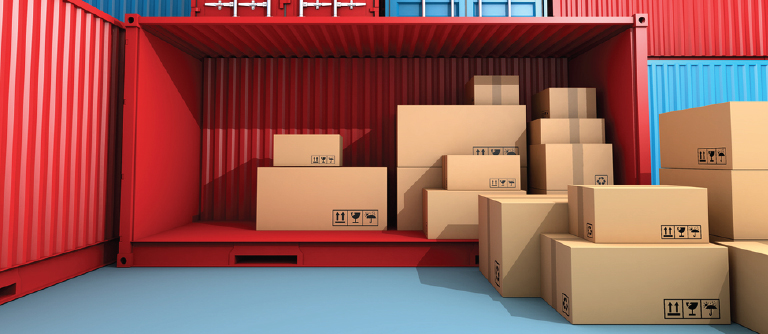Freight charges have long been a major obstacle for businesses looking to scale their operations. Before getting into the discussion of LCL shipping, let’s understand that the global freight rate in the month of July 2024 stood at an all-time high of $5,900.
With these concerns in mind, less-than-container load shipping quickly became a suitable alternative for many. Businesses can use this to ship relatively smaller quantities of goods worldwide. This stands out as an affordable approach, as you can share the container space with others.
Despite this shipping method’s practicality, most people are not aware of its overall potential. If you have been wondering, read this blog to the end for a clear idea.
So, What Exactly is LCL All About?
Less-than-container load, commonly known as LCL, is a new approach to ocean freight transportation. In this approach, multiple businesses consolidate their shipments in a single container.
Businesses with fewer shipment quantities can collaborate and make the most of this deal. This tactic’s simple benefits are cost savings, appropriate capacity levels, and the prevention of overcrowding.
How Does LCL Actually Work?
The basic working principle of LCL shipping is not that complex if you think of it. Here, shippers share a container with other businesses. The process starts with packing and delivering the shipments to a warehouse or a staging place.
From there, freight forwarders come into the picture to consolidate containers with shipments moving toward a similar destination. That does not necessarily mean the shipments leave for the same destination.
Instead, you can even benefit from LCL, which allows shipments to head on a similar shipping route. In this case, they will unpack the container at the destination, and the shipment will head towards the final destination.
How to Calculate the Cost of LCL?
Calculating the cost of LCL depends on the agreement between freight forwarders and carriers. Of course, other variable influencing factors, like the current market demand and supply, also play a role in this matter.
However, the primary cost-influencing factor here is the space the cargo takes and the current market demands. What’s interesting here is that weight does not influence the cost much since ships are designed to handle heavy loads.
Nonetheless, here are some of the common things you will find in this shipping method:
Pickup: This includes the cost of collecting the shipment from the point of origin, such as factories, delivering it to the warehouse, and then to the vessel or ship.
Loading and Unloading: Here, the focus is on the cost of loading and unloading shipments with others into the container at the destination and origin ports.
Ocean Freight: Ocean freight generally covers the cost of transporting the shipment overseas.
Delivery: The cost of delivering the LCL shipment to its final destination is another important factor that adds to the total cost.
Paperwork: The final factors contributing to the total shipment cost are the fees for customs clearances and relevant shipping paperwork.
Why Should You Consider LCL Shipping?
Countless small- and medium-sized businesses benefit from LCL’s perks. Hence, there is no reason why you should not make the most of this. Here are some reasons to consider this approach to shipping:
Flexibility: Proper flexibility in shipping is a must for eCommerce businesses, and LCL makes this possible. You can leverage this by sending out multiple shipments at once.
Cost-Effectiveness: It should come as no surprise that cost-effectiveness is one of the primary motivators for choosing the shipment method. This makes sense, considering multiple businesses are shipping their goods together.
Reduces Inventory Cost: Lower inventory costs are another important factor that makes this a preferable choice. This approach requires you to store and manage smaller quantities of goods, reducing cost.
Accessibility: When a small business tries to enter the international market, it often has to overcome multiple hurdles. LCL eliminates these obstacles and helps businesses access better opportunities regardless of their size.
Efficient Delivery: Online businesses rely on efficient delivery to win over customers, and this shipment method makes this possible. This allows even smaller businesses to access better markets and enhance overall customer satisfaction.
Are There Any Potential Drawbacks of LCL Shipping?
Even LCL shipping can succumb to certain limitations, and you must be aware of them. These include things like the chances of delay, the overall complexity of the process, and even increased handling. Once you find a way to deal with these limitations or at least mitigate their impact, you can realize your business goals.
Final Thoughts
Finding the right shipping method can be the reason behind the success of your business. This is where LCL comes into the picture to rescue these businesses. So, make sure you understand this approach towards shipping, acknowledge the limitations and make the most of its potential.






